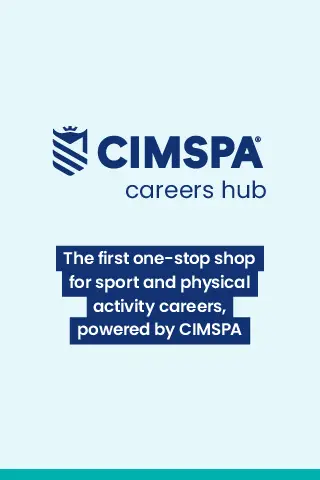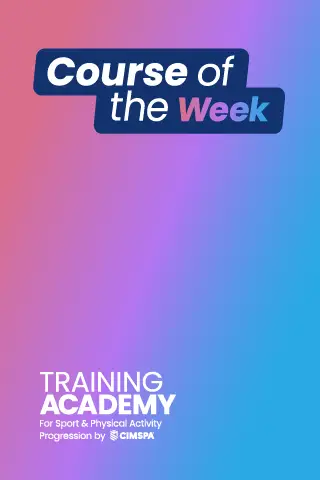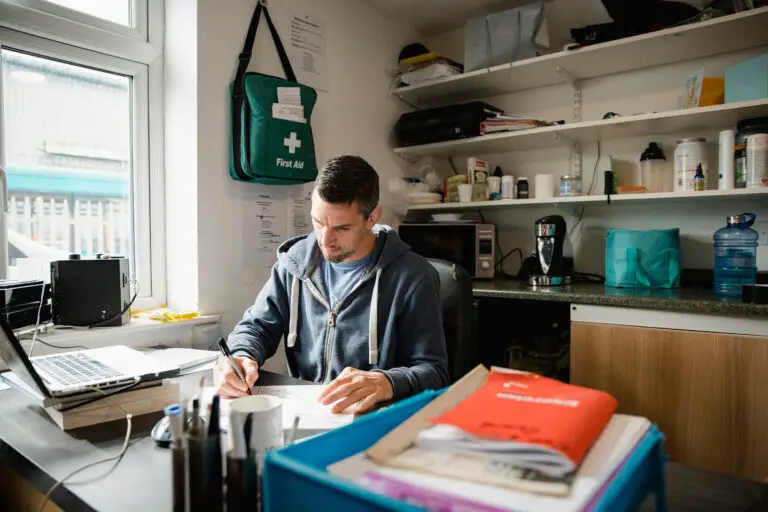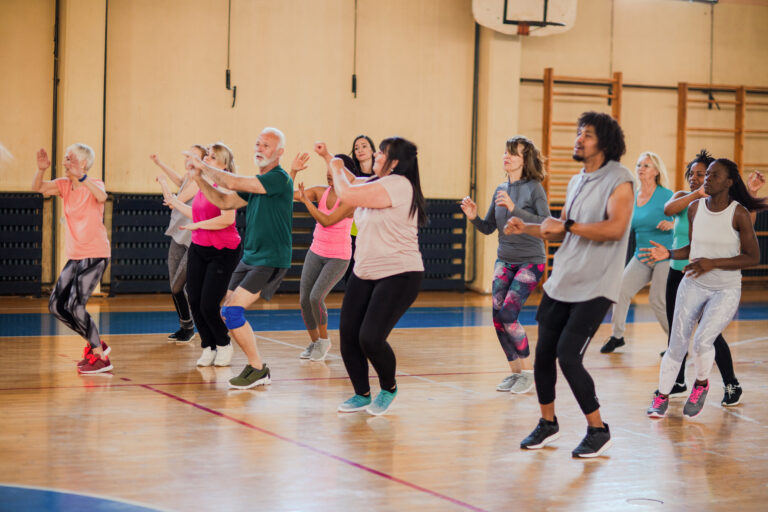Sun and heat protection – our sector’s responsibility
We spoke to Michelle Baker of CIMSPA Training Provider Partner the Melanoma Fund about the importance of knowledge and awareness of this topic.

Imagine this: you’re overseeing a group of participants during an intense outdoor session. It’s a warm day, and the temperature is rising. You’re focused on getting the best out of everyone when you notice someone struggling with the heat – their energy is flagging, and their skin is reddening under the harsh sun. What do you do?
As a sport and physical activity professional you know that while your goal is to help participants gain the benefits of movement, your first responsibility is to keep them safe. Sunburn, dehydration, and heatstroke aren’t just uncomfortable – they can be dangerous, impacting both short-term performance and long-term health. If someone’s health is damaged while participating in sport and physical activity, they may be reluctant to return and lose out on future health benefits.
For this reason, it’s important for sector professionals to be able to offer appropriate and timely support in an emergency. With more hot summer days than ever before, sun and heat protection is a key skill area for anyone who works outdoors.
So, if you do notice someone struggling in the heat:
- Get them to shade.
- Provide water to rehydrate.
- Cool them down (use damp cloths, fanning or remove excess clothing).
- Check in – ask how they feel.
- Ensure they are not left alone.
- If they don’t improve, seek medical help.
- Assess the wider group and make sure everyone, including yourself, is following sun protection measures from your sun policy.
Although you can see the importance of this guidance, and hopefully you would have done just this, have you – or anyone you work with – ever been trained to know how to manage these situations effectively?
The results of a recent survey conducted by the Melanoma fund highlight that many of those offering and leading outdoor sessions are lacking the necessary knowledge:
- 72% of coaches, leaders, and teachers have never received any training on sun or heat protection.
- Only 16% of organisations have a separate sun protection policy.
- 43% of those working with children outdoors say they feel unsupported or poorly supported by their organisation.
- Just 4% believe all the children they work with truly understand sun safety.
- Over two thirds of respondents reported sun or heat-related incidents, including cancelled sessions, sunburned children, and heat exhaustion.
This is where the Melanoma Fund is offering innovative support, tackling a widespread lack of resources and knowledge. The charity, led by Michelle Baker, is committed to reducing the risk of sun-related health issues through education and advocacy. With a focus on sports and outdoor recreation, the Melanoma Fund promotes a wide range of campaigns designed to raise awareness of sun safety for individuals, clubs and groups alike.
Risk assessment
Michelle explains the importance of sport and physical activity professionals gaining formal education on the topic:
“A common misconception is that many people already know how to sun-protect effectively.
“Sun safety isn’t just about slapping on sunscreen when it’s sunny; it’s about understanding how to assess risk based on environmental factors, the UV Index, activity levels, temperature and individual needs.
“For professionals working outdoors, preparation, education and consistency are extremely important for creating a culture of awareness and proactive action, rather than merely ticking off a safety checklist.”
Although relevant for everyone when spending time in the sun, protective knowledge and skills are especially important for outdoor sport and physical activity, where participants often push their physical limits under the hot sun. The combination of strenuous activity and high heat can result in heatstroke, heat exhaustion, and even life-threatening conditions if not managed correctly.
Melanoma and other forms of skin cancer is also a concern for those spending extended periods outdoors. Primarily caused by UV exposure from the sun, both participants and professionals are at increased risk if they are not equipped with the relevant know-how.
Although it’s easy to think that your customers aren’t at risk if they’re only spending a short session outside, these issues are becoming increasingly prevalent. As public awareness of health and safety grows, specifically around the responsibilities of those who work with young people, participants or their parents are looking to ensure that they place their trust in a professional who is aware of and knows how to effectively and professionally manage the risks of sun and high temperatures.
Develop your sun skills
The Melanoma Fund’s specially designed course focuses on empowering sport and physical activity professionals to become positive role models and reliable service providers:
“There are two critical elements to sun and heat protection. First, the most impactful thing a sport and physical activity professional can do when it comes to sun safety is to lead by example – not only protecting themselves but also setting the tone and inspiring those under their care to do the same. It’s about creating a culture of awareness.
“Secondly, education breeds confidence. This course eliminates the false sense of security, confusion and guesswork that often accompanies sun safety knowledge. It replaces it with a well-rounded understanding of how to protect participants in any environment, empowering professionals to take proactive steps with confidence,” explains Michelle.
The Sunguarding: Sun and heat protection course covers a wide range of sun safety topics, including how to assess risk, understand the UV index, recognise signs of heatstroke and dehydration, and implement practical sun safety strategies during sports events and training. It focuses on the unique challenges faced by coaches, trainers, outdoor activity leaders and sporting event organisers, offering tailored guidance to ensure that sector professionals can apply the knowledge in their role.
The Melanoma Fund delivers the course in two formats: an online version for individual learners and presentation supporting an in-person experience for groups, colleges and universities. With the training opportunity offering a flexible way to gain essential knowledge and strategies to manage sun and heat risks in daily work for sport and physical activity professionals, it’s easy to ensure that you are protecting participants’ health and helping them perform at their best when outdoors.”
Did we mention that it’s free?
Due to the importance of sport and physical activity professionals understanding how to support and care for participants in a tough environment, the Melanoma Fund is offering its sunguarding course at no cost.
As a CIMSPA-endorsed course, learners also gain 3 CIMSPA CPD points upon completion of the learning, contributing to their annual CPD requirement.
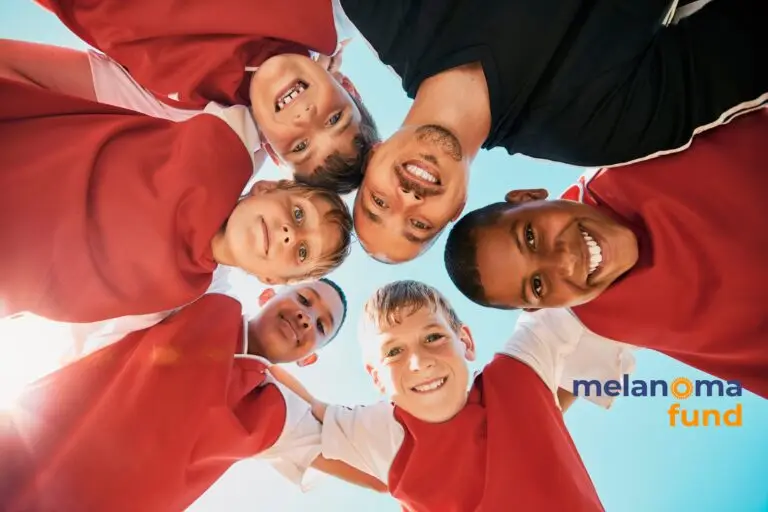
Real impact
Chris Chapman MCIMSPA completed the course and described to us the range of ways the learning has added value to his practice as a coach:
“The training raises your awareness of things that might seem obvious but that you don’t always think about with everything else that you have going on as a coach.
For example, once applied, sun cream doesn’t actually work all day. If you’re in a contact sport where you’re sweating, hitting tackle bags or each other and the sun cream is rubbing on your clothes, in reality, it’s wearing off very fast and you are at risk of sun damage.
The course also then helps you think about how to build that knowledge into your coaching practice so that it becomes good behaviours and good habits that support not just you but your athletes as well.”
Not only do the skills learnt help Chris to keep participants safe, it also forms part of the wraparound care that he offers as a coach. This reassures parents and helps him to act as a role model for the young people he works with:
“I wrap sunguarding into wider caring. For example, I’ve shared the UV index we learnt about on the course with parents and the other coaches I work with. I’ve used it as a conversation-starter to help share the responsibility of sun protection with the parents. They appreciate that I’m looking out for them.
I also try and incorporate it into role modelling. Before, I would never have brought sunscreen to a training session because I put it on before I arrived. Now, I take it with me and put extra on when I’m there to make a point.”
As Learning Experience Manager at UK Coaching, Chris also sees the importance of the Melanoma Fund’s guidance being shared on a wider level:
“We worked with the organisation to embed their sunguarding skills within UK Coaching’s safe practice guidelines. They’re one of our pillars of the duty of care, so it was important for us to put some key sun and heat protection resources into them to raise awareness for coaches in that particular space.”
Find out more
Hopefully, reading this article has enhanced your understanding of the risks associated with delivering sport and physical activity sessions in the sun, as well as how to effectively manage any challenging situations that may arise.
However, to truly offer the best service to participants and stand out among sector professionals, we recommend exploring the resources provided by the Melanoma Fund and sign up to their free sunguarding course.




